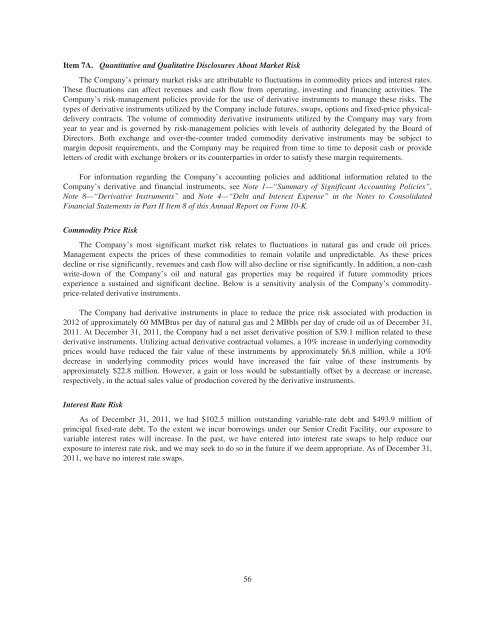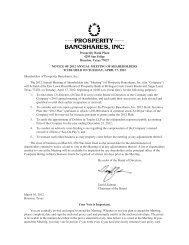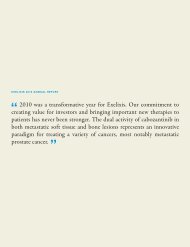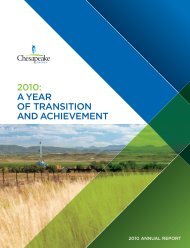goodrich petroleum corporation - RR DONNELLEY FINANCIAL
goodrich petroleum corporation - RR DONNELLEY FINANCIAL
goodrich petroleum corporation - RR DONNELLEY FINANCIAL
Create successful ePaper yourself
Turn your PDF publications into a flip-book with our unique Google optimized e-Paper software.
Item 7A. Quantitative and Qualitative Disclosures About Market Risk<br />
The Company’s primary market risks are attributable to fluctuations in commodity prices and interest rates.<br />
These fluctuations can affect revenues and cash flow from operating, investing and financing activities. The<br />
Company’s risk-management policies provide for the use of derivative instruments to manage these risks. The<br />
types of derivative instruments utilized by the Company include futures, swaps, options and fixed-price physicaldelivery<br />
contracts. The volume of commodity derivative instruments utilized by the Company may vary from<br />
year to year and is governed by risk-management policies with levels of authority delegated by the Board of<br />
Directors. Both exchange and over-the-counter traded commodity derivative instruments may be subject to<br />
margin deposit requirements, and the Company may be required from time to time to deposit cash or provide<br />
letters of credit with exchange brokers or its counterparties in order to satisfy these margin requirements.<br />
For information regarding the Company’s accounting policies and additional information related to the<br />
Company’s derivative and financial instruments, see Note 1—“Summary of Significant Accounting Policies”,<br />
Note 8—“Derivative Instruments” and Note 4—“Debt and Interest Expense” in the Notes to Consolidated<br />
Financial Statements in Part II Item 8 of this Annual Report on Form 10-K.<br />
Commodity Price Risk<br />
The Company’s most significant market risk relates to fluctuations in natural gas and crude oil prices.<br />
Management expects the prices of these commodities to remain volatile and unpredictable. As these prices<br />
decline or rise significantly, revenues and cash flow will also decline or rise significantly. In addition, a non-cash<br />
write-down of the Company’s oil and natural gas properties may be required if future commodity prices<br />
experience a sustained and significant decline. Below is a sensitivity analysis of the Company’s commodityprice-related<br />
derivative instruments.<br />
The Company had derivative instruments in place to reduce the price risk associated with production in<br />
2012 of approximately 60 MMBtus per day of natural gas and 2 MBbls per day of crude oil as of December 31,<br />
2011. At December 31, 2011, the Company had a net asset derivative position of $39.1 million related to these<br />
derivative instruments. Utilizing actual derivative contractual volumes, a 10% increase in underlying commodity<br />
prices would have reduced the fair value of these instruments by approximately $6.8 million, while a 10%<br />
decrease in underlying commodity prices would have increased the fair value of these instruments by<br />
approximately $22.8 million. However, a gain or loss would be substantially offset by a decrease or increase,<br />
respectively, in the actual sales value of production covered by the derivative instruments.<br />
Interest Rate Risk<br />
As of December 31, 2011, we had $102.5 million outstanding variable-rate debt and $493.9 million of<br />
principal fixed-rate debt. To the extent we incur borrowings under our Senior Credit Facility, our exposure to<br />
variable interest rates will increase. In the past, we have entered into interest rate swaps to help reduce our<br />
exposure to interest rate risk, and we may seek to do so in the future if we deem appropriate. As of December 31,<br />
2011, we have no interest rate swaps.<br />
56











